The Yukon was one of the last jurisdictions in North America to require the registration and licencing of motor vehicles when it introduced An Ordinance to Regulate the Speed and Operation of Motor Vehicles on Highways in 1914.
|
The Ordinance, like many of the provincial Acts that had inspired it, required all motor vehicle owners to submit to the Territorial Secretary "a statement containing his name and address, with a brief description of the vehicle so owned by him including the name of the maker, factory number, style of vehicle and motor power ..."
|
The cost of registration was set at $3 for motorcycles and $10 for all other types of motor vehicles. Once this process was completed the Territorial Secretary registered the vehicle "in a book or index" and assigned to it a "distinctive number".
|
The Ordinance went on to state that these distinctive numbers were to be in the form of "two number plates having thereon the registration number of such motor vehicle, the abbreviated name of the Territory and the year of issue" and, importantly, that these be produced by the Secretary and delivered to each motorist. |
1914 |
1915 |
1916 |
Vehicles Licenced |
1914:
|
less than 100 |
1915:
|
less than 100 |
1916:
|
less than 100 |
1917:
|
less than 100 |
1918:
|
less than 100 |
1919:
|
less than 100 |
1920:
|
less than 100 |
1921:
|
less than 100 |
1922:
|
less than 100 |
1923:
|
less than 100 |
|
* According to yearbooks maintained by Census Canada, between 1914-23 the number of motor vehicles registered in the Yukon never totaled more than 100. |
|
|
|
|
|
|
|
|
|
As a result of the crude nature of the plates produced by the Secretary between 1914 and 1923 (likely commissioned from a local sign maker), collectors have popularly assumed that plates from this era are "pre-state" and that official uniform plates manufactured by the Territory did not start until 1924. |
For those unfamiliar with the term "pre-state", collectors use it to refer to a period in which a state or province required that motorists make their own plates to certain specifications. Popular materials included leather, wood, and tin with letters and numbers either painted on or comprised of house numbers. By way of example, in British Columbia, the "pre-state" (or "pre-provincial") era occurred between 1904 and 1912 (to see examples of plates made by BC motorists, Click Here!). |
In the Yukon, however, there never was a "pre-state" era and all plates issued since 1914 are government made. |
At left: the form of Yukon licence plates from this era is clearly visible on the 1923 No. 85. The abbreviation for the territory of "YT" always appeared at right and above the year.
Unfortunately, the fate of the "book or index" maintained by the Secretary remains unknown, meaning it is not possible to identify who might have owned this particular vehicle. |
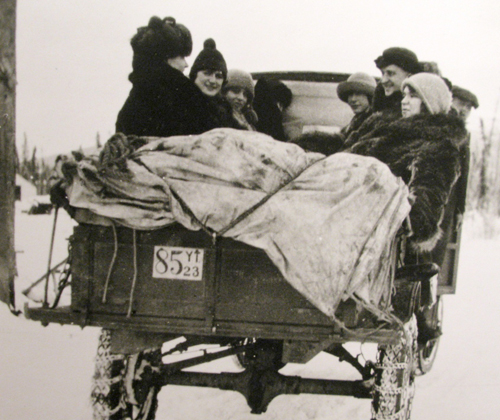 |
At left: the form of Yukon licence plates from this era is clearly visible on the 1923 No. 85. The abbreviation for the territory of "YT" always appeared at right and above the year.
Unfortunately, the fate of the "book or index" maintained by the Secretary remains unknown, meaning it is not possible to identify who might have owned this particular vehicle. |
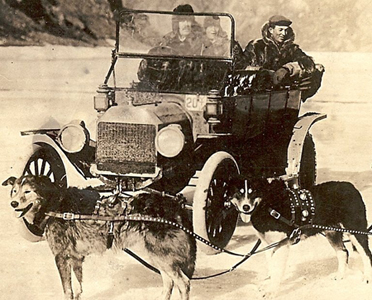 |
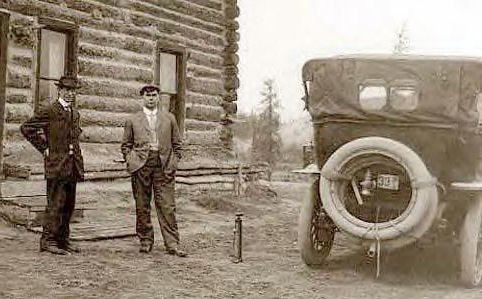 |
No. 20
(thought to be 1914 as "YT" appears to be vertical) |
No. 33
(year unknown) |
| A Rare Plate Type! |
How many of these plates have survived remains unknown, but a good indication as to their scarcity is provided by the collection of the Yukon Transportation Museum. The Museum has a run from 1914 to the present, but as can be seen in the photos below, most of the plates from this era are reproductions (i.e. fakes) with the genuine issues - being the 1914 and 1918 - being in fairly poor shape: |
| Most of the plates pictured in the gallery at the top of this page originated from the collection of Clarence Titus (Philadelphia) who started assembling them in the 1940s. His collection was subsequently acquired by Vern Strieffert (Chicago) in the 1960s. When Strieffert died in 1970, the collection was acquired by Lee Roy Hartung (Glenview Illinois). Following Hartung's death in 2011 the plates were auctioned and now reside in Florida. |
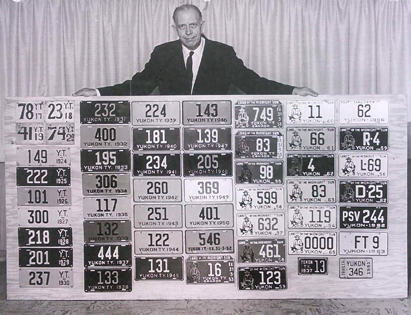 |
At left: Vern Strieffert with his collection of Yukon. The date of the photo is unknown but thought to be in the 1960s. |
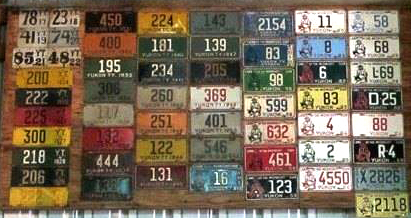 |
At left: Lee Roy Hartung's wall of Yukon licence plates at the time of his death in 2011. The Yukon tin plates from 1917-1922 can be seen at the top-left of the photo as well as many of the other plates from the Strieffert collection. |
| In recet years a couple of other tins have surfaced. The 1923 No. 80 (pictured above) is reported to have been found under a house in Whitehorse while renovations were being completed. Below, the 1921 No. 50 is part of a known pair that was in a collection on Vancouver Island before being split-up following the death of that collector. |
|
|